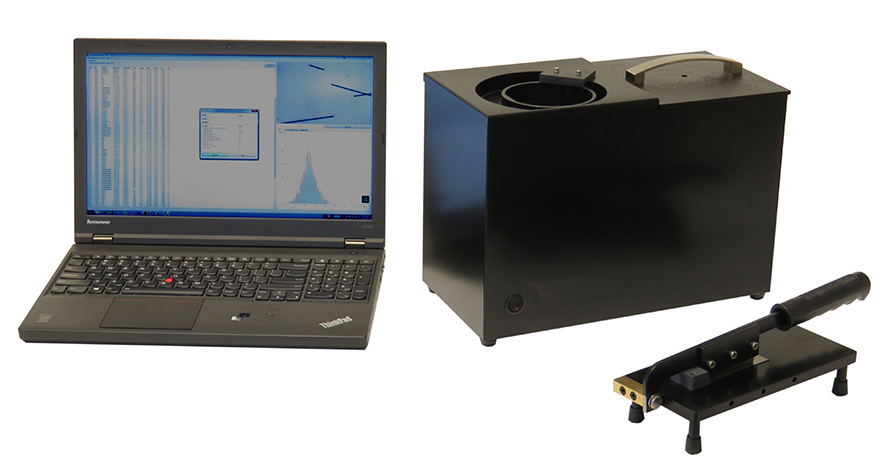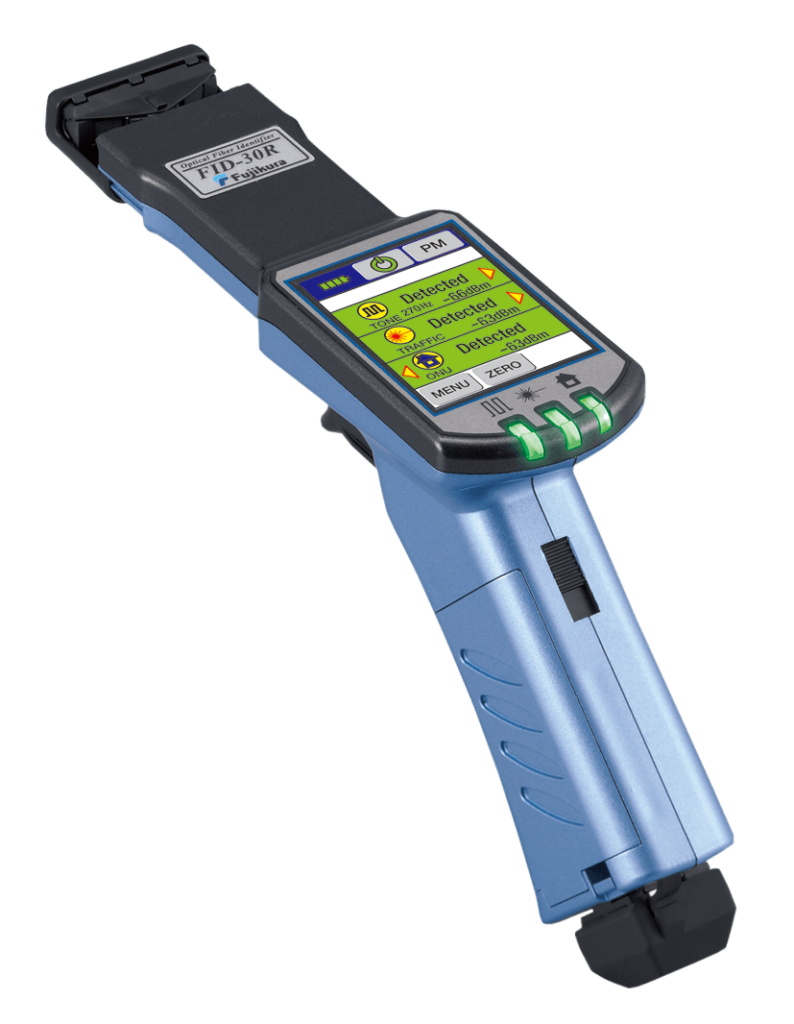How an Optical Fibre Diameter Analyser Ensures Consistent Results
How an Optical Fibre Diameter Analyser Ensures Consistent Results
Blog Article
Optimize Your Fiber Optic Performance: Comprehending Optical Fibre Diameter Analyser Technology
The performance of fiber optic systems is seriously influenced by the accuracy of their diameter, an element usually forgot in the search of optimal signal stability. Recognizing the technology behind optical fiber diameter analysers discloses the intricate equilibrium between measurement accuracy and manufacturing quality. These gadgets not only enhance conformity with market criteria but also provide real-time understandings that can preemptively attend to prospective issues. However, the implications of their usage expand past mere dimension; they can essentially modify the landscape of fiber optic performance. What variables should one consider to harness their full possibility?
Relevance of Optical Fiber Diameter
The diameter of optical fiber plays an important function in establishing the efficiency and efficiency of communication systems. On the other hand, smaller diameters tend to support less modes, which can improve signal quality and reduce crosstalk.

Additionally, understanding the size's effects can bring about cost savings by minimizing the demand for signal amplification and repeaters in substantial networks (optical fibre diameter analyser). In verdict, the significance of optical fibre size can not be overstated, as it straight affects the general effectiveness and dependability of contemporary interaction systems

How Diameter Impacts Signal Quality
Signal high quality in optical fibre systems pivots dramatically on the diameter of the fiber. A smaller sized size can lead to higher depletion rates, resulting in signal loss as light trips through the fiber.
Alternatively, larger diameters typically permit for enhanced light capture and decreased modal diffusion, enhancing signal clarity. In multimode fibers, a larger core diameter can support multiple light modes, however it may also present intermodal dispersion, which can break down signal high quality. Picking the ideal fibre diameter is critical for accomplishing the desired efficiency in details applications.
In addition, the communication between the fibre diameter and the wavelength of the light utilized plays an important duty in establishing the reliable transmission distance and overall signal integrity. Comprehending exactly how fibre size affects signal high quality is important for network developers and engineers making every effort to enhance optical fiber systems for trustworthy, high-speed information transmission.
Introduction of Diameter Analyser Modern Technology
In lots of optical fibre manufacturing processes, precise dimension of fiber size is necessary for guaranteeing regular performance and high quality (optical fibre diameter analyser). Size analysers are advanced tools designed to examine the physical measurements of optical fibers with high accuracy. They employ advanced optical and laser technologies to determine the size, ovality, and concentricity of the fiber, hence offering vital information for quality assurance
These analysers can run in-line during the manufacturing procedure or as part of off-line testing protocols. In-line systems allow real-time surveillance, enabling suppliers to change specifications instantly, therefore maintaining optimum manufacturing problems. Off-line analysers, on the other hand, offer thorough examinations of batches, ensuring that any type of inconsistencies from defined resistances are identified and attended to.
Size analysers considerably add to the reduction of issues in optical fibers, enhancing general item integrity. By consistently measuring key specifications, these technologies assist in conformity with market requirements and specifications. As the need for high-performance optical fibres remains to increase, the function of diameter analysers becomes significantly essential in achieving the preferred high quality and efficiency requirements in fiber optic systems.
Secret Functions of Fibre Diameter Analysers
Although various versions of fibre size analysers exist, they commonly share numerous vital functions that enhance their capability and reliability. Among the most substantial features is high-resolution measurement capacities, which make sure precise diameter analyses, important for keeping quality assurance in fibre production. In addition, lots of analysers integrate innovative optical sensing units designed to identify minute variants in fiber size, therefore this content offering invaluable information for procedure optimization.
Another crucial feature is real-time tracking, permitting drivers to obtain immediate feedback on fiber diameter throughout the production procedure (optical fibre diameter analyser). This ability helps with quick adjustments and minimizes the probability of problems. Many analysers also come equipped with easy to use interfaces, enabling drivers to quickly browse with settings and information outputs
Moreover, robust information storage and analysis performances are vital for tracking historic performance trends and guaranteeing compliance with sector requirements. Some versions even supply connectivity options for assimilation into existing production control systems, enhancing general functional efficiency. Last but not least, portable and compact layouts enable flexible implementation within production atmospheres, making sure that top quality assurance processes are seamless and effective. These features collectively add to the efficacy of fibre diameter analysers in optimizing fiber optic efficiency.
Best Practices for Fiber Optimization

First, normal calibration of optical fibre diameter analysers is vital. This guarantees exact dimensions and decreases potential inconsistencies that might affect performance. Next off, preserving a tidy functioning environment is important; dust and impurities can bring about indicate deterioration.
In addition, it is necessary to select fibres that meet specific application requirements. This entails examining elements such as depletion, bandwidth, and environmental problems. Correct setup strategies should additionally be complied with, consisting of avoiding sharp bends and extreme stress, which can compromise fibre stability.
Additionally, utilizing innovative monitoring systems can assist in real-time performance Read More Here assessments, making it possible for punctual recognition of problems. Normal screening and upkeep must be conducted to make certain that fibres remain within optimal operational parameters.
Lastly, training employees on the most recent fiber optimization modern technologies and methodologies will boost their capacity to execute effective approaches. By complying with these best methods, organizations can significantly improve the performance and life expectancy of their optical fibre systems, making sure reliable communication and information transfer.
Verdict
Finally, the combination of optical fiber size analyser innovation is critical for optimizing fiber optic performance. By making sure exact dimensions of fibre dimensions, these analysers significantly boost signal top quality and decrease losses during data transmission. Routine calibration and upkeep of the analysers are important to promote optimum efficiency and conformity with industry standards. Inevitably, the application of this innovation helps with enhanced information transmission prices and reinforces signal honesty, adding to the overall performance of fibre optic systems.
Signal quality in optical fiber useful source systems hinges significantly on the diameter of the fiber.In numerous optical fiber manufacturing processes, precise measurement of fibre diameter is crucial for guaranteeing regular performance and high quality. As the demand for high-performance optical fibres continues to rise, the duty of size analysers ends up being progressively important in attaining the desired high quality and efficiency requirements in fiber optic systems.
These features jointly contribute to the efficiency of fibre size analysers in enhancing fiber optic performance.
In verdict, the assimilation of optical fibre diameter analyser technology is critical for taking full advantage of fiber optic performance.
Report this page